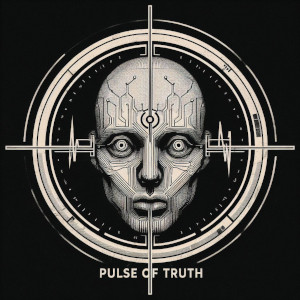Back in the day I used a raspberry pi 3 for 1080p h.264 and steam link / moonlight. Problem was omxplayer plays up to 1080p60 beautifully, but anything else would struggle. Eventually ‘upgraded’ to an old laptop to easily YouTube/netflix in the browser too.
- 0 Posts
- 71 Comments

 22·9 days ago
22·9 days agoI fucking love copyparty. It starts simple enough but then the millions of options and configs let you twist it into exactly what you need.
As someone that runs a server OS that doesn’t support docker, it is very refreshing to see a single binary project. It has a focus on being administrator friendly thats really fallen out of fashion these days.

 402·16 days ago
402·16 days agoI’ve stopped using it as people have pointed out it’s hurtful, but I’ve never fully understood why. To me it’s in the same group as idiot, fool, lunatic, imbecile and cretin. Words that aren’t used to describe conditions anymore, only used as insults. While they can be used with hatred, they can also be used in a teasing way with friends. To me it doesn’t reach the level of racist, sexist and homophobic slurs.
I wanted to learn more and found a paper that makes the case that ableist insults are slurs. Download it here

 1·25 days ago
1·25 days agoYeah true the index headset wasn’t a bargain compared to the quests that were clearly being sold as cheaply as possible.

 1·25 days ago
1·25 days agoI think it would be fine. Friend of mine has Immich on a N100, like you mentioned, the initial ML tasks on a big library takes over 24 hours but once it’s done it doesn’t need much. I don’t have experience running next cloud but the others you mentioned don’t need much RAM/CPU.
ZFS doesn’t need much RAM, especially for a two disk 4TB mirror. It soaks up free RAM to use as a cache which makes people think it needs a lot. If the cache is tiny you just end up hitting the actual speed of the HDDs more often, which sounds within your expectations. I dare say you could get by with 8 GB, but 16GB would be plenty.
I’d only point out if you’re looking for it to last 10 years, a neat package like the ugreen might bite you. A more standard diy PC will have more replaceable parts. Would be bigger and more power hungry though.

 12·25 days ago
12·25 days agoCan get an ‘aoostar GODY’ on AliExpress for US$1000. Basically the same GPU, 16GB RAM, 512GB SSD. The steam machine has less cores and less ethernet. Though it also has a way bigger heatsink, LEDs and extra Bluetooth/valve gamepad antenna.
Comparing the deck to comparative brands, it is wayyy cheaper. I think valve are going to be aggressive on price, especially when the CPU/GPU are fairly old and meek.

 15·1 month ago
15·1 month agoThey’ve been seen using TM SGNL made by Israeli company TeleMessage to archive messages. Which is good except that it does so unencrypted, giving Mossad a window into the administration…

 2·2 months ago
2·2 months agoThat is fricking sick dude!
 11·2 months ago
11·2 months agoI don’t understand. Police can track you down via your credit card, your phone, your licence plate on your car, rando security cameras. All of these are hard to avoid. How often does your ID not just get checked, but recorded? It seems like not much of a game changer.
 12·2 months ago
12·2 months agoI think you’re connecting digital IDs with people’s online activity for some reason. In most countries, authorities can already connect online activity with an individual, since you register and pay for internet. Doing things that the powers that be don’t like will get you in legal trouble. Remember the 2000s when the music industry sued individuals for millions? In China they take down your post if it challenges social cohesion, in the USA they take all of your money and assets for challenging corporate revenue.
Most digital IDs are options for people that already have their bank/credit card on their phone and don’t want to carry a wallet just for ID. Some places like Estonia go further with actual asymmetric keys that let you sign documents with your ID’s private key that proves you signed it.

 8·2 months ago
8·2 months agoIf it was me, I’d snoop the DNS requests and/or SNI headers. Flag on torrent index sites and trackers known to be used for pirate stuff. They don’t need to know exactly which paw patrol movie you’re downloading, just that you are getting something from thepiratebay.
Does it exist anymore? iTunes went DRM free in 2009. Bandcamp is DRM free. Even streaming services can be readily downloaded from with alternative clients. Who’s still selling DRM’d music?
If you’re looking for a privacy respecting paid service that’s not just a file locker for pirates I have two recommendations: At a previous workplace, we used LiquidFiles. More catered for commercial uses.
Personally I’ve been using Bitwarden Send. Requires a paid account ($10/year) and limited to 500MB files.

 6·3 months ago
6·3 months agolol you probably would have gotten away with it if you just used China’s history as another example of empire. But singling out ‘Han culture’ as the problem makes you look like a bigot. Especially when your example is from the Qing Dynasty, that was ruled by Manchus people, not Han.

 924·3 months ago
924·3 months agoIt’s called secure boot and it’s been around for over 10 years now.

 2·3 months ago
2·3 months agoSoftware passkeys can’t provide attestation and don’t. A service requiring it would reject every apple and google device too. Its a feature for hardware like yubikeys and smart cards used by governments to ensure it’s not a knockoff with backdoors.
No thats actually not an issue at all if your device is secure and uses full disk encryption.
Oh I see your computer is secure well then nothing to worry about 🤣
If i want to write down my private key on a piece of paper and type it in by hand then thats my issue to deal with and not theirs.
With a hardware FIDO2 key, the private key never leaves the device, instead it signs challenges. Malware on the PC can’t access the private key and make it’s own copy.
Using software keys, they are at least encrypted in the vault until you open it, then there’ll be a window of time with a plain copy in memory that malware can potentially grab.
Your plaintext private key file can be stolen by malware easily and immediately. You would actually be better off with it written on a post it note.
Course in real life malware is gonna be stealing your browser cookies to gain access to your accounts and avoid the whole keypass thing. In the world that FIDO was born, authentication is happening all the time and any possibility of key theft is considered a compromise.

 141·3 months ago
141·3 months agoI wanted to be sympathetic to the author. Passkeys are complicated, especially since they now try to cover so many situations, and it certainly originates from the corporate world. But this guy is spreading FUD. Tim Cappalli pointing out security shortcomings in keepassxc’s implementation a couple of times is not proof that FIDO Alliance is anti open source.
Is had my eye on this one for a while. Any good?

 3·4 months ago
3·4 months agoAh kay, definitely not a RAM size problem then.
iostat -x 5Will print out per drive stats every 5 seconds. The first output is an average since boot. Check all of the drives have similar values while performing a write. Might be one drive is having problems and slows everything down, hopefully unlikely if they are brand new drives.zpool iostat -wWill print out a latency histogram. Check if any have a lot above 1s and if it’s in the disk or sync queues. Here’s mine with 4 HDDs in z1 working fairly happily for comparison:
The
init_on_alloc=0kernel flag I mentioned below might still be worth trying.



I think the idea of directions came before the idea of negative.